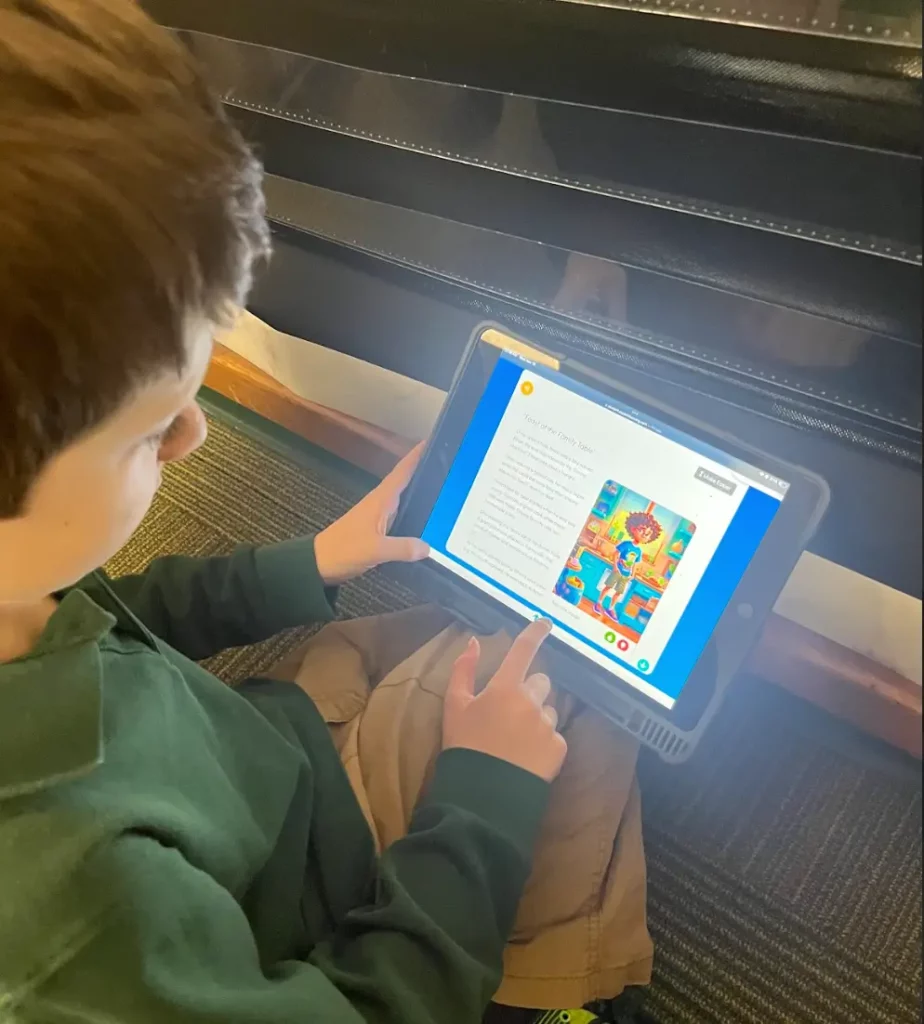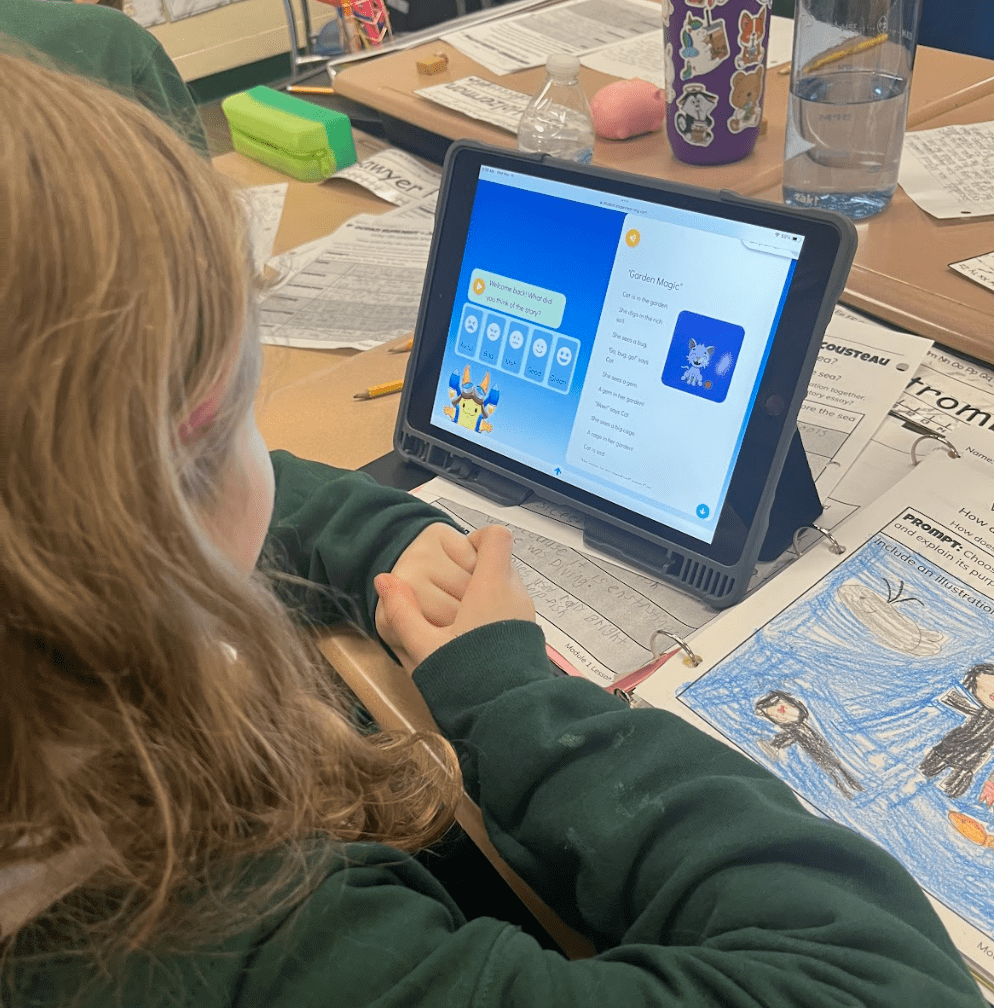Ridley’s Mission Statement: It is the mission of the Ridley School District to create a caring environment that gives all students the opportunity to achieve their fullest personal and academic potential in order to become productive and responsible citizens.
Ridley School District has long been known for their innovation. Located just outside of Philadelphia, they were one of the first districts to introduce Apple computers to their students and were also among the first to spearhead a 1:1 iPad initiative. As part of their commitment to provide students with cutting-edge resources for instruction and practice, they began implementing eSpark in math and reading with their students back in 2014 and have eagerly embraced each new development within eSpark in the years since.
It comes as no surprise then, that when eSpark unveiled its new playfully personalized approach, Ridley teachers and administrators were among the first to realize its potential in the classroom. Here’s what they had to say after seeing eSpark’s Choice Texts activities come to life for their students:
Q: How would you describe Choice Texts to others?
Gina Ciallella, Director of Personalized Learning:
“Students are asked a series of questions where they fill in the blanks and get to write their own stories. They pick the settings, pick the characters, pick the plot, and it designs a story for them around the topic. So it’s engaging and it’s exciting for the students to see the story they created!”
Jessica Bowden, Elementary Technology TOSA:
“They don’t even realize that they’re learning about parts of a story or reading skills through making the story and then answering the questions about their own story. That’s one of the hardest parts about state testing, or really any kind of reading testing–if they have no background knowledge, or they don’t even have an interest in the story, it’s really hard. You’re trying to teach a skill with something they’re not interested in. Now [with Choice Texts], you’re trying to teach a skill with something they’ve created themselves… this is then adding and increasing that knowledge and then they are able to better apply it when the topic is maybe something they don’t know or they’re not interested in.”

A Ridley student proudly shows off a story they personalized with the help of Choice Texts.
Q: What value do you see student choice adding to the classroom environment?
Jessica Bowden, Elementary Technology TOSA:
“As a district, it’s kind of our theme. We believe in–when you’re making projects–giving students a choice in how they turn things in. We have our iPads and digital features, but we still give students the option to use paper and pencil. So giving students that choice of “it’s your story, but you make it yours” … giving them that autonomy is great.”
Gina Ciallella, Director of Personalized Learning:
“We really want the kids to design their own plan for their learning and be able to personalize it and indicate what they need to be successful. That’s the direction we’re moving as a district.”
Q: What impact have you seen on student engagement since the introduction of Choice Texts and playful personalization in eSpark?
Jessica Bowden, Elementary Technology TOSA:
“The biggest feedback [from our teachers] has been that engagement is back up again. We had a little bit of a struggle in the hybrid year, where some of our older students who were learning at home just felt done with it. It was easy to do electronically, so they were using it every day. They needed something new, and now one of our teachers said she can just hear the kids laughing and joking and talking… they just want to go into reading and do the Choice Texts all the time.”
Q: How do you think eSpark’s strategy of “playful personalization” aligns with the way students learn?
Jessica Bowden, Elementary Technology TOSA:
“One of our teachers mentioned that it’s really matching current research on kids’ brains and the way they learn. She’s reading a book right now (Brain-Based Learning: Teaching the Way Students Really Learn by Eric Jensen and Liesl McConchie) and said that Choice Texts is following all the research she’s reading about. Being up to date and in line with that really makes the product feel [sustainable]. Some of the other curriculums… you may get to a point where the research doesn’t really match anymore. And the updates [eSpark is] making are matching the current research. It also follows our theme of “teaching students, not programs”. We really try to focus on how the student learns. Yes, we have curriculum and different things to use, but you find the ways the students need those things, rather than those things needing to fit each student.”

A Ridley student carefully reads over a story they personalized while they answer questions about their text.
Q: Choice Texts leverages the power of AI to create personalized stories for each student. How do you feel about AI in education – is it something you feel is important for teachers to understand?
Gina Ciallella, Director of Personalized Learning:
“I think it’s important they understand and see the connection to what they’re already using. We sent psychologists and guidance counselors to a training on AI last May, and when they came back, their eyes were wide open–they couldn’t believe the things that could happen through AI.”
Jessica Bowden, Elementary Technology TOSA:
“I don’t know that they understand yet that there is a positive impact to it. A lot of the backlash last year with chatbots seemed to be that kids would be cheating… to show them a positive end on how AI works and how it is adding to the personalization piece I think is interesting for them to know. My goal is to get teachers to understand technology on a different level. Students need to learn (and teachers need to teach) that these are tools that help–that the AI isn’t just a way to get around something but will produce a better end product when it’s used appropriately.”
“This is an easy way to put AI in students’ hands without it being something extra. They’re already using eSpark, so now they’re using eSpark and using AI at the same time. It’s much easier to implement and use when they understand it, and I think that’s where we’re at.”
–Jessica Bowden, Elementary Technology TOSA at Ridley School District
Q: Anything else that excites you about how playful personalization is working in your classrooms?
Jessica Bowden, Elementary Technology TOSA:
“We’ve always loved the fact that eSpark is personalized to [the student’s] level. It’s really hard when you’re teaching creative writing and you’re trying to get 4th and 5th grade work out of kids who just aren’t there. I went into a 3rd grade classroom’s content and pulled up one story that seemed a little simple, and it turned out to be a student who was working on the 1st grade level and had made his own story. Rather than trying to write a 3rd grade story, he was able to write a story on his own level. And then that kid also has access to the stories that are on his grade level that he can read, or use the “Read to Me” feature… That Tier 1 or Tier 2 support that the teachers are looking for in the classroom–this is a great way to help them out.”
Try Choice Texts yourself to experience the value that eSpark’s playfully personalized reading and math curriculum brings to classrooms just like yours.


